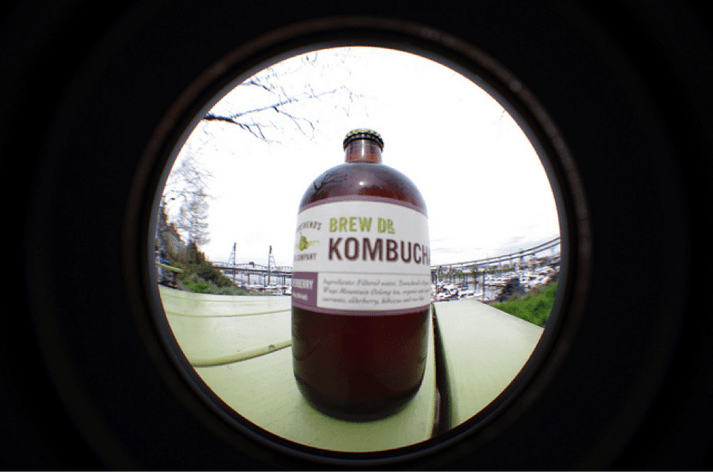 image credit: schvin via flickr cc
image credit: schvin via flickr cc
Visible sustainability was recently named among the six most important consumer packaged goods (CPG) trends for millennials by Forbes. Individuals born after 1980 have a strong affinity towards corporate sustainability and eco-friendly packaged foods. As the youngest generation of consumers enters the workforce, they’re developing some serious purchasing power. Brands that can demonstrate sustainability with biodegradable packaging and end-to-end corporate responsibility are more likely to win the hearts of millennials.
For consumers, CPG packaging and products aren’t two different concepts. Researchers at Clemson and other organizations have found that packing is an “integral part of the food product,” and packaging characteristics are strongly tied to how consumers perceive the contents. Minimalist, eco-friendly, or biodegradable packaging is a crucial component of communicating that a CPG product is good for the environment.
Nielsen Research has found that sustainable marketing tactics can lead to a measurable lift in millennial purchase of CPG, particularly tea, coffee, and snacks. Join us as we explore five reasons why sustainable packaging design is critical in marketing food products to millennials.
-
Millennials are Green
Pew Research on millennials in adulthood indicates that while less than a third of millennials identify as outright environmentalists, they’re the most “sustainable” generation to date. Young adults are:
- More likely to support strict environmental policies and regulations
- 80% prefer to work for sustainable employers
- Choose sustainable transportation options when possible
- Will pay more for eco-friendly products
Regardless of how millennials perceive the label of “environmentalist,” it’s clear that many members of this age group behave in ways that are clearly sustainable. This includes considering a product’s potential environmental impact when making purchase decisions and forming loyalties.
-
Millennials are Image-Conscious
Millennials are image-conscious consumers, which could be a natural byproduct of growing up among constant exposure on social media. To many millennials, the simple act of selecting a packaged beverage during a lunch break is the potential for a statement about their identity and values. In fact, half of millennials believe that brands “say something” about “how they fit in” to the world as a whole, and 59% are willing to pay more for a brand that portrays the right image.
Millennials have been raised among great environmental awareness. Dialogue about global climate change and recycling played a role in public education during the 1980’s and 1990’s. For many of the youngest consumers, the ability to select a CPG product that’s wrapped in biodegradable packing is an important statement to make on a daily basis.
-
They Define Sustainability a Little Differently
In one of the most interesting discoveries about millennials and green packaging, Hartman Group suggested that millennials define sustainability “from a social responsibility or organizational health perspective.” In other words, the eco-friendly aspect of packaging is just one aspect of millennial purchase decisions.
Hartman writes that millennials love Starbucks because they provide educational opportunities to their store associates. Millennials love Tom’s shoes and Warby Parker glasses because they provide free products to people in need. For brands considering the messaging of their packaging, communicating corporate sustainability and positive global citizenship could matter just as much as your packaging’s ability to decompose.
-
Millennials are Already Driving Sustainable Packaging Trends
Millennials view taking care of themselves and the planet as “one and the same,” according to TriplePundit. Young consumer’s preference for healthy, convenient foods packaged sustainably has already have a significant impact on CPG.
In a fascinating case study, Tetra Pak reveals why declines in prepared soup consumption were suddenly reversed. It’s all related to the recent availability of biodegradable packaging, or the paper cartons of soup that have become so common. 75% of millennials prefer soup in paper cartons to cans. While many of these consumers might not be aware that paper cartons are 70% more eco-friendly than cans, the visible sustainability of millennial-targeted soup packaging has made a clear impact.
-
Millennials are Smart and Suspicious
For millennials, the process of brand selection and purchase decisions is social. Younger consumers are more likely to trust recommendations from friends and family than advertising. A social media post from a Facebook friend about a great new food product will have a more significant impact than a sponsored brand post in their feed about the same product.
The natural suspicion of young consumers, who are the best-educated generation to date, should play a role in packaging design. Unless a millennial can immediately identify a product as eco-friendly, they may not believe a brand’s claims of a low environmental impact. While Nielsen reveals that millennial promoters on social media are a CPG company’s best marketers, packing plays a clear role in whether consumers are comfortable making a purchase.
For CPG brands hoping to connect with the youngest generation, visible sustainability is crucial. Millennials are likely to avoid packages that don’t immediately present as eco-friendly, and may develop an immediate dislike for food products that don’t appear to reflect their consideration for the environment. By integrating recyclable, minimal, or biodegradable packaging concepts, brands can loudly broadcast their values.





